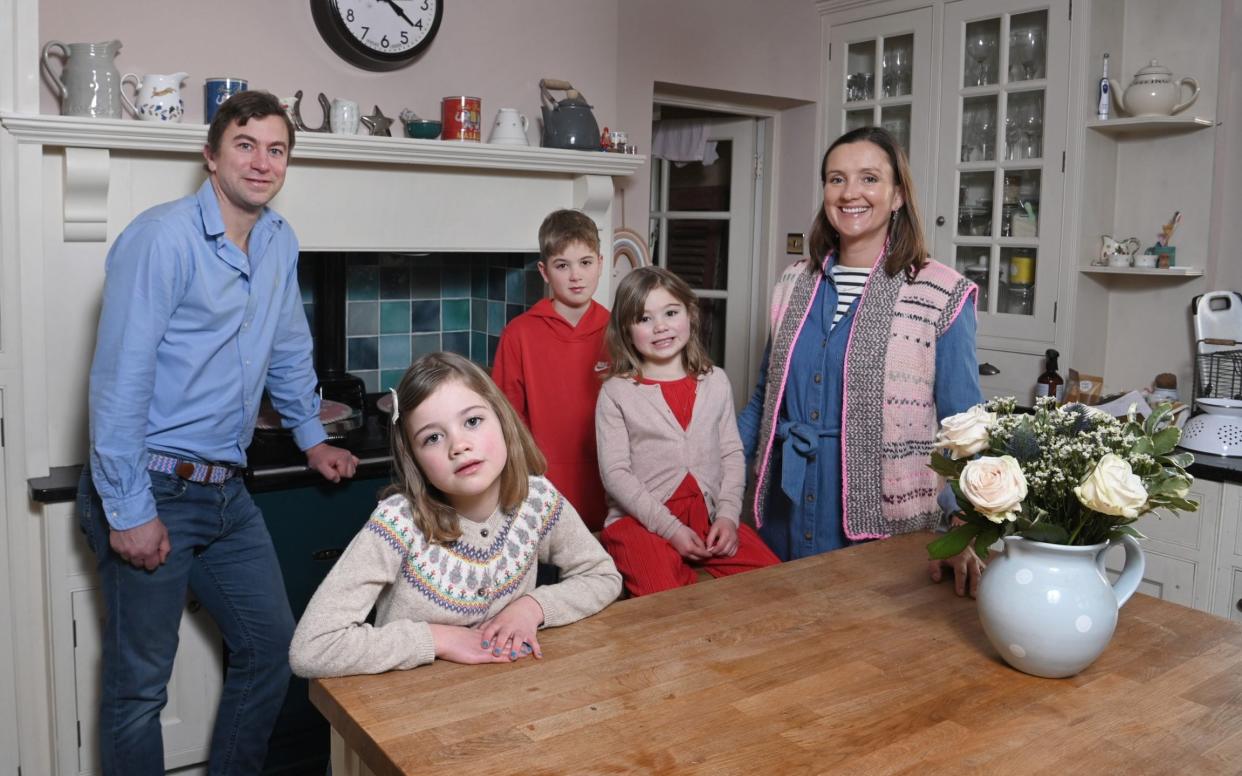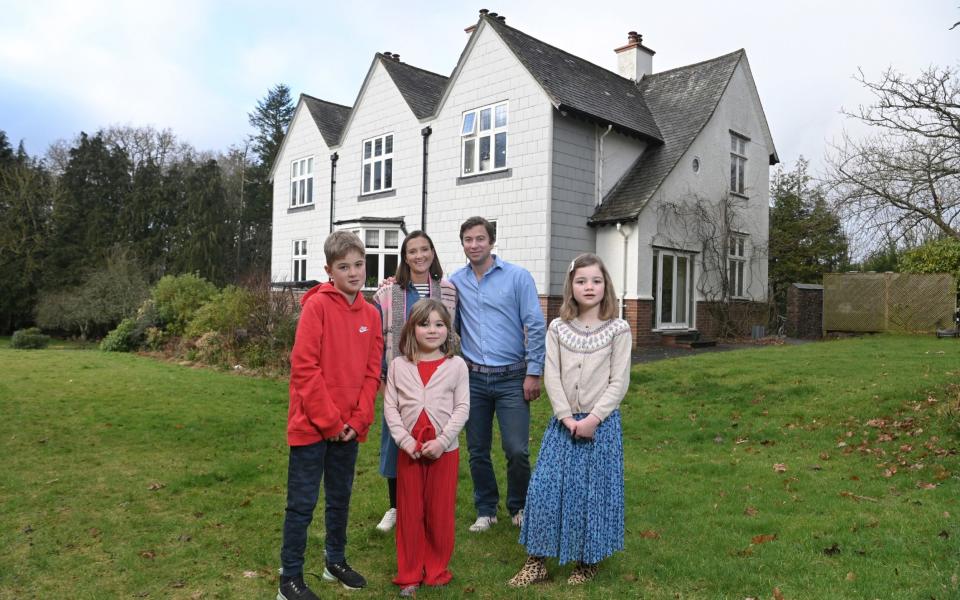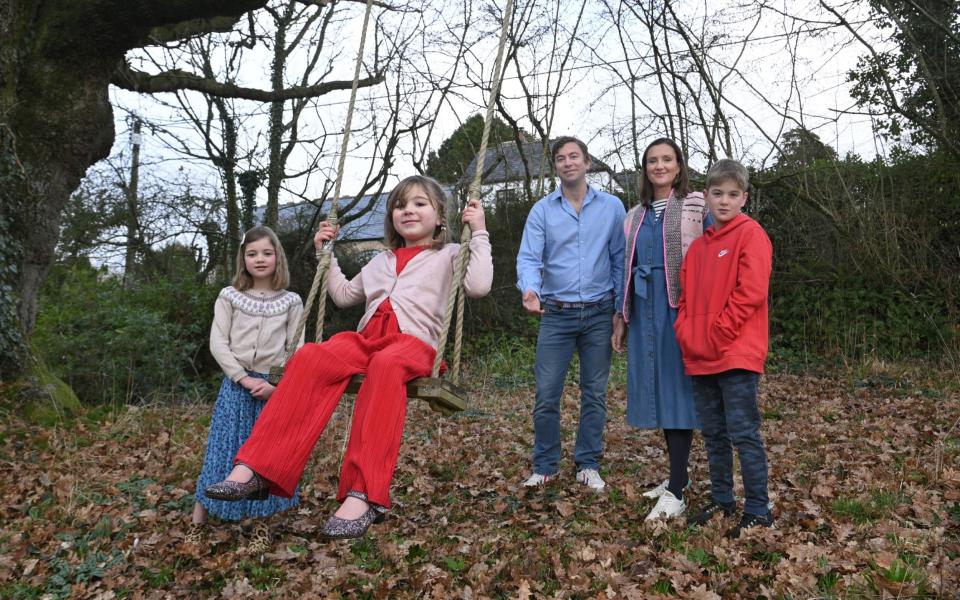‘We moved to the country – but no one told us we would have to pay £800 to refuel our Aga’

The pandemic and subsequent home working revolution sparked an exodus of workers leaving the cities to flock to bigger homes in the country and a spot of the good life.
Among the post-lockdown masses who left suburbia were Jo and Charles Saunders and their three children Max, 11, Molly, seven, and Mary, five.
With Charles, 43, a chartered surveyor, no longer needing to be in the London office full-time, and in search of a new start in the West Country, the family left their “country-lite” existence near Reading for a five-bedroom vicarage in Devon, set in a couple of acres on the edge of Exmoor.
They now have a menagerie that includes two ponies, dogs, cats and rabbits. “We’ve made lots of friends through school, and we love the slower pace of life,” says Saunders, 42, a nutritionist. But as many people who have made similar moves have discovered, country life comes with unexpected costs – especially with energy costs now 65pc higher than a year ago, and food prices rising at their fastest rate in half a century.
For many relocators – and we are not talking about those buying huge country estates, just those swapping one family house for another – it is the reality of heating a big old rural property that hits hardest. Some have taken to inhabiting one part of the house to keep the heating bills down.
“People who bought over two hours from London or more than 30 minutes from a mainline train station are regretting being so far from the office, as with the added expense of heating and lighting the house all day every day it’s becoming unworkable financially,” says buying agent Jess Simpson of Jess Simpson Property Search.

For the Saunders family, heating a large Victorian house with tall ceilings and no double glazing has come as a shock. Even those in a position to improve their “EPC” energy efficiency ratings by replacing leaky old single-glazing may find their eco ambitions stymied by local conservation officers “who don’t take kindly to these sorts of aesthetic changes”, says Mark Lawson of The Buying Solution, another agency.
Like many rural houses, the Saunders’ home runs on oil. “Our oil-fired Aga is on permanently to heat the house and it costs £800 to refuel every couple of months,” Saunders says. They also light the fire to warm them while they work from home, spending £120 on logs every few weeks.
Travel is another “money burner”. Charles now commutes to London once a week – usually with little notice, with a return train ticket costing as much as £100.
Before, the children caught the bus to school and they could all walk into town, but now they rely on two cars to get everywhere. “The kids are at two different schools and some days there are three different pick-up times, so I spend a lot of time in the car and need to refuel once a week,” Saunders adds.
After-school activities such as football matches and swimming lessons also see her zooming all over the county. “Everything in Devon takes a while as the distances are big and the lanes are tiny,” she says.
The recent cold snap has added to their outgoings, from needing to repair windows that have taken a battering over winter to dealing with Charles' flooded garage office. “He’s had to pay to use a different workspace while we wait to render the building and install damp-proofing, which we are planning to do this spring,” Saunders explains.
The ponies – whose field costs £120 a month to rent – are eating far more hay over a freezing winter. “We’ve been stabling them at night as well, which requires more hay and bedding,” she says.
Rising food prices have required some compromises too. The pets consume £90 worth of food a month, Saunders estimates, and the family have ditched their Waitrose habit. “That’s been vetoed by Charlie. Now we go to Morrisons instead, as it’s far closer,” she says.
The Saunders have no intention of leaving their new country life, but Jess Simpson, whose buying agency is based in Oxfordshire, is seeing many families hit by the reality of rising rural living costs this winter.
“They're selling the dog, pulling the kids out of school and heading back to the familiarity and comfort of London,” she says. Others – those who have bought country houses costing £2m-£4m – are selling the London flat they kept as an investment “to bridge the financial gap created by rising interest rates and the cost of living”, Simpson adds.

For those whose lifestyles include domestic staff, wages have risen by 10-25pc. "This is because there is so much demand they can pick and choose the work they want to take on. Try getting a gardener in South Oxfordshire. If you find one, expect to pay £35 an hour for weeding.”
Meanwhile, nannies and grooms “expect two-bedroom accommodation and expect to bring their own pets, a two-hour lunch break and 30-days holiday. That’s before you have even discussed their hourly rate,” she says.
Those who bought a post-lockdown project are also finding that with rocketing renovation costs – due to the scarcity of materials and builders – the numbers do not stack up.
“The purchase price plus building costs, depending on quality and scale, rarely equal the end value of the property. You usually need to deduct about 15-30pc. Unless the market works in your favour, country houses are emotional, discretionary lifestyle purchases – but the lifestyle must be affordable,” Simpson adds.
There is still demand for properties that tick the country homes wish list. “Character properties worth up to £2.5m in good locations which have a balance of sizeable accommodation and between one- and five-acres of outside space,” according to Claire Carter, of estate agents John D Wood and Co.
Many house hunters, though, are looking for luxury new-builds instead, says Jamie Freeman, director at Haringtons buying agency. “I suspect this year we will see an increase in the number of country homes on the market as the cost of living bites and the reality of the need to downsize becomes apparent,” he adds.
Lawson, too, feels the romance of the old, draughty rectory is likely to wane this year. “More modern mansions, house and barn conversions with underfloor heating, wood burners and good insulation are proving more popular,” he says.
A rural move may take some rethinking as the realities of a cost-of-living crisis bite. But it’s still worth every penny, Saunders insists. “We absolutely love it here,” she says. And she has allowed herself one luxury at least.
In the absence of a gym nearby, she has bought herself a Peloton bike – perhaps the most energy-efficient way to keep yourself warm in winter.

 Yahoo News
Yahoo News 
